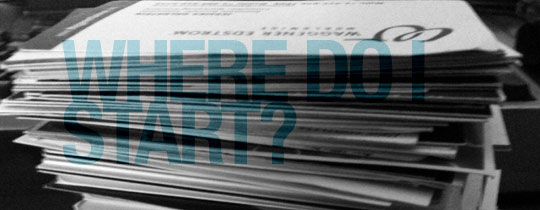Stacked in my drawer are dozens, if not hundreds of business cards that I’ve collected over the years. Perhaps you have the same quandry as I do: what do I do with all of those cards?
If you’re like me, you don’t dare throw them away. After all, you might need one of them some day. But, the problem is, most likely, you don’t have a clue when and where you met those people. All you know is that somehow, you have their card. Good, but not helpful.
Jeff Pulver, co-founder of the Vonage Internet phone company and creator of the VON and 140 conferences, has an expression that you absolutely must take to heart:
“We live or die on our database.”
The days of just collecting business cards are over. It’s time to do change our ways and actually put them to good use.
Here are five steps to collecting and using business cards effectively:
- Context – Take a moment to immediately write on the back of the card, the event and details of your conversation. If you promised to follow up, write that down too.
- Storage – While at the event, be sure you store the card in a secure place: preferably your wallet, purse or notebook pocket. Avoid putting them in your clothes pockets. It’s almost a guarantee that you’ll lose them.
- Review – Once your back at your desk, review the cards for context and action points. You’ll want to be sure you do this within 24-48 hours of making a connection. Also, a quick email follow up, or better yet, a handwritten note is a nice touch.
- Address Book: Take the time to input each contact into your address book. You can do this manually or using one of those nifty business card scanners. Don’t forget to insert your contextual notes too.
- LinkedIn & Connect. You now hold in your hands the currency for connecting to people on LinkedIn: an email address. Do a quick search and LinkedIn.com and request to connect with your new contact. Be sure to erase the generic note and write something related to your meet and greet. Including details will be a good reminder of who you are and why you’re asking to connect.
If you look at your stack and get overwhelmed about the amount of time it’s going to take to get through it, consider breaking it down into daily segments. If you started each day processing 10 cards, you’ll get through your stack in no time.
Chances are, reviewing each card will jolt your memory and you’ll be able to remember when and what you were discussing during the business card exchange. Be sure to include details in your follow up or LinkedIn connect message. People always appreciate it when you recall details: personal or professional. The extra time it takes to do so will always be worth it.
